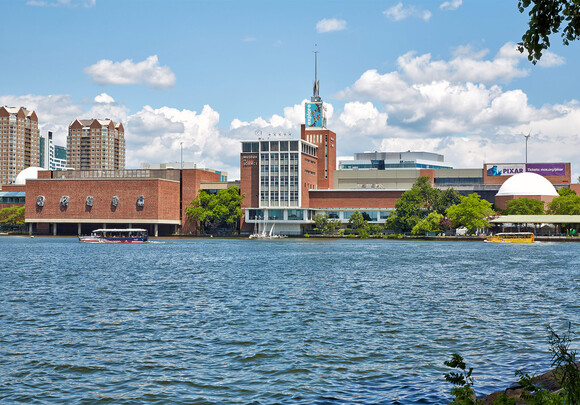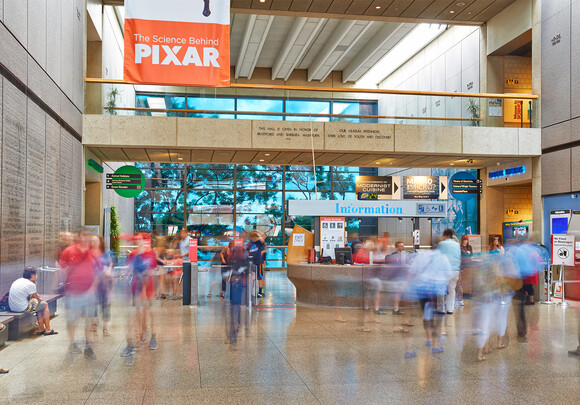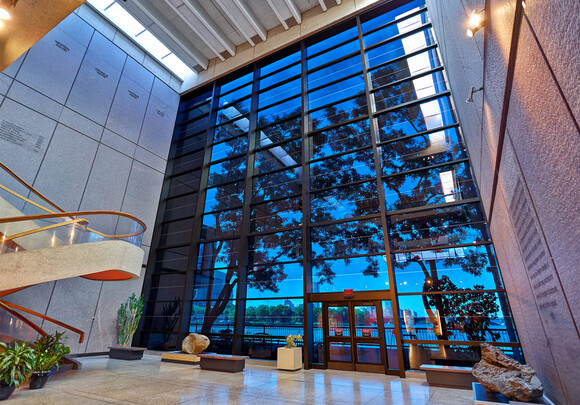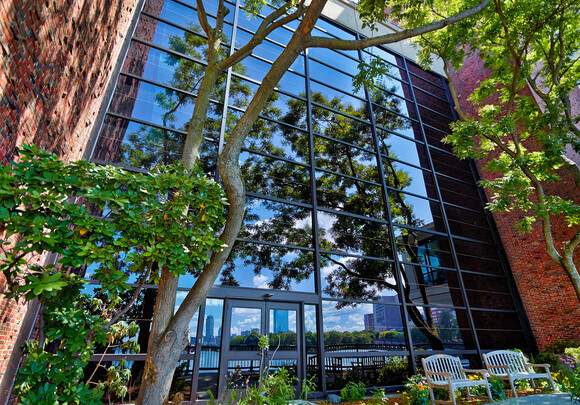Museum of Science
SageGlass® solves solar glare problem at Museum of Science, Boston while preserving river view.
The Museum of Science, Boston is using electronically tintable SageGlass dynamic glass, a product of Saint-Gobain, to solve a sun glare problem in the Museum’s lobby, while also saving energy and improving the visitor experience.
Previously, the Museum featured a three-story, single-paned glass curtain wall overlooking Boston’s storied Charles River basin that did not block harsh afternoon sunlight into the main lobby.
“It was overpowering at times,” said Paul Ippolito, the Museum’s director of facilities. “Low angle sun, particularly in the winter months, poured in directly through the curtain wall as well as reflected off the river deep into the lobby of the Museum. As a result the visitors’ experience was compromised.”
The Museum commissioned Cambridge Seven Associates to do a glazing study to evaluate potential alternatives to solve the problem. The firm assessed everything from mechanical roller shades and retractable covers to canopies and architectural light shelves.
“Nearly all of the options we explored to solve this problem would have resulted in compromises to performance or the visitor experience,” said Matthew Wasdyke, architect at Cambridge Seven Associates. “The Museum has a strong connection to the Charles River that it wanted to preserve. Those solutions not only impeded that connection, but also didn’t necessarily increase the curtain wall’s overall thermal efficiency.”
Because SageGlass can darken or clear automatically in response to changing light conditions, it eliminated the glare problem without compromising the iconic views of the Charles River. And, by letting sunlight in on cool days and blocking it on hot days, SageGlass dramatically reduces energy demand.
The SageGlass curtain wall uses light sensors to trigger variable tinting throughout the day, with manual override controls for when the museum wishes to darken or clear the windows for special events. The curtain wall was configured with three different horizontal zones to enable customized daylight blending.
“Our number one goal is to improve the visitor experience. With SageGlass, we were able to eliminate glare from the sun that diminished the visitor experience, while preserving the outdoor view and reducing energy consumption,” Ippolito said.
By taming the sun’s glare, SageGlass has also enabled the Museum to utilize the indoor space and the connection to the river in new ways. A new exhibit opening in early 2016, Yawkey Gallery on the Charles River, will allow visitors to explore how nature and technology are intertwined along the Charles River Watershed in the lobby where the previous curtain wall would have made the exhibit impossible.
“Using state-of-the-art glazing technology was also in keeping with the Museum’s mission to play a leading role in transforming the nation’s relationship with science and technology,” Ippolito said. “We try to seek out and test newer building and energy technologies whenever possible. SageGlass complements our mission nicely.”



